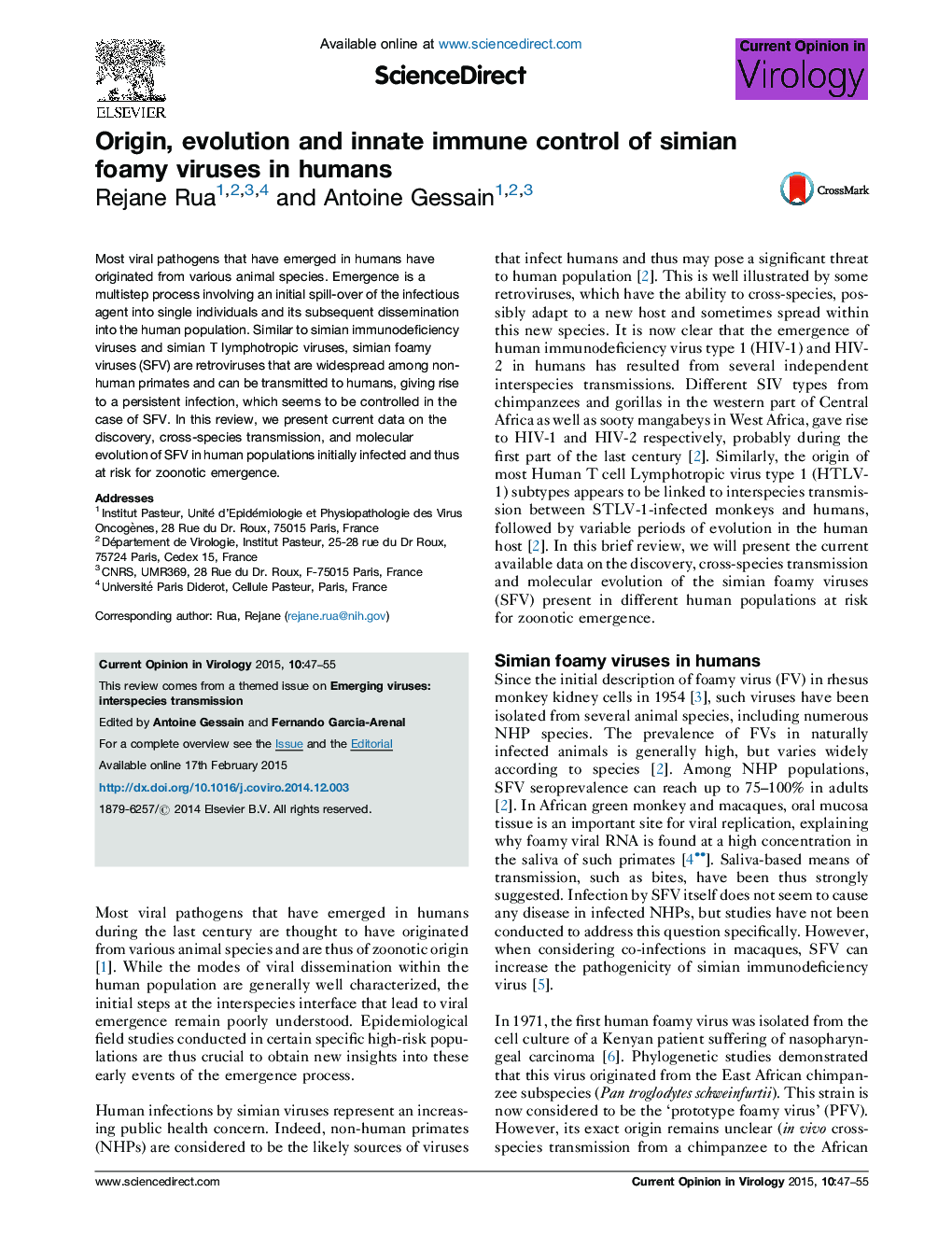| Article ID | Journal | Published Year | Pages | File Type |
|---|---|---|---|---|
| 2473230 | Current Opinion in Virology | 2015 | 9 Pages |
•Simian foamy viruses (SFV) are transmitted to humans after contact, mainly bites, with infected monkeys and apes.•Contexts of transmission include mainly hunting activities and monkeys’ sympatry.•In humans, active immune response probably explains SFV latency in blood and saliva.•It is a model of restriction of retroviral emergence after cross-species transmission.
Most viral pathogens that have emerged in humans have originated from various animal species. Emergence is a multistep process involving an initial spill-over of the infectious agent into single individuals and its subsequent dissemination into the human population. Similar to simian immunodeficiency viruses and simian T lymphotropic viruses, simian foamy viruses (SFV) are retroviruses that are widespread among non-human primates and can be transmitted to humans, giving rise to a persistent infection, which seems to be controlled in the case of SFV. In this review, we present current data on the discovery, cross-species transmission, and molecular evolution of SFV in human populations initially infected and thus at risk for zoonotic emergence.
Graphical abstractFigure optionsDownload full-size imageDownload as PowerPoint slide
